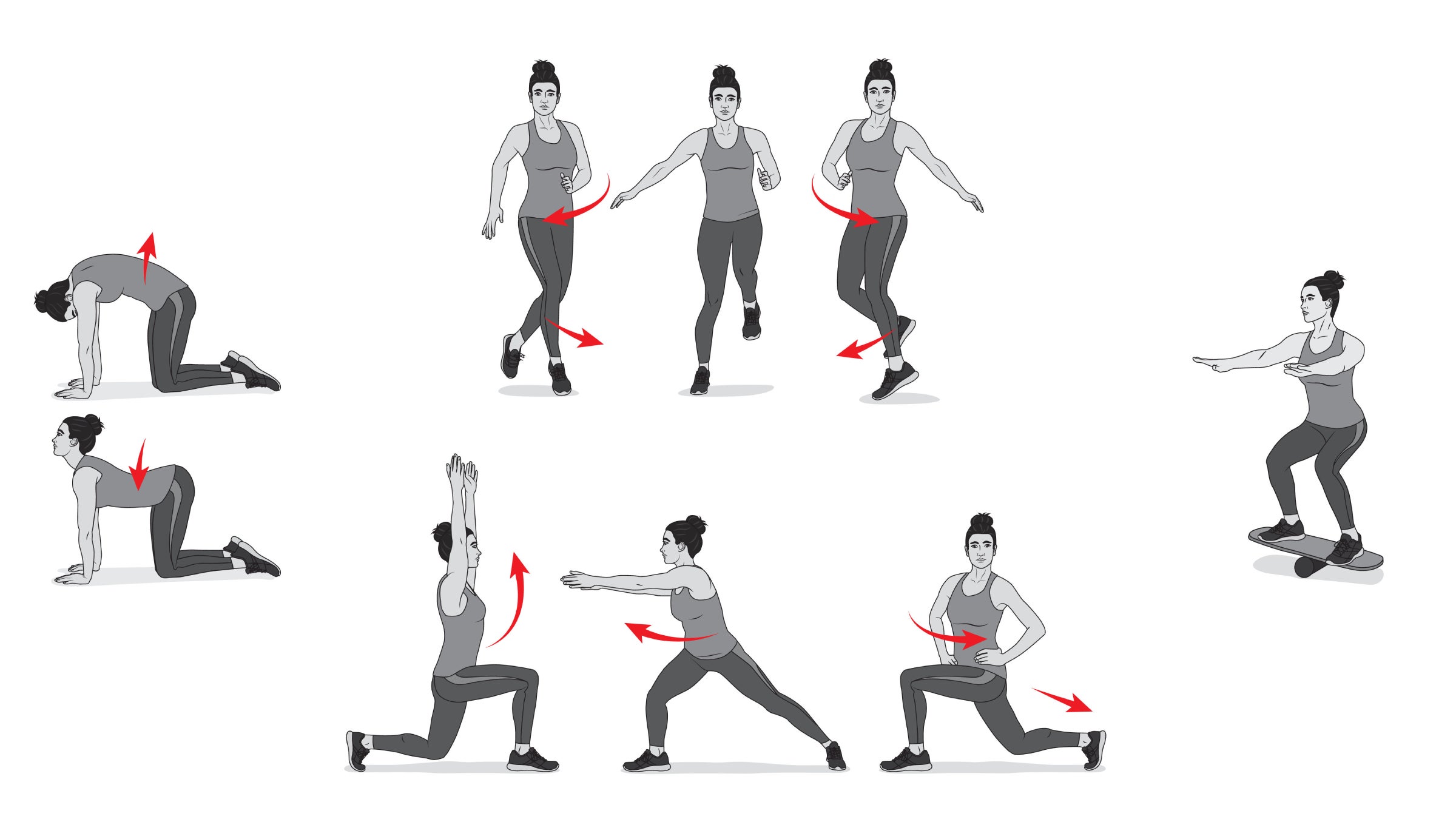The 5 Active Recovery Moves You Should Be Doing

(Photo: Oliver Baker)
Even the most resilient and ambitious athletes benefit from recovery. But that doesn’t have to mean luxuriating on the couch with your feet up. While it might sound like an oxymoron, “active recovery” is often more productive than complete inactivity. Some movement on recovery days can help you bounce back quicker than being entirely sedentary. You can also use those days to address complementary muscles that can be neglected by the repetitive, straightforward movements of swimming, cycling, and running.
Here are a few moves that will get your blood flowing, use your muscles in ways they may not be accustomed to, and help make your “day off” more productive.
RELATED: How Much Training is Too Much Training?

1. Carioca
This drill is often neglected (and even more frequently mispronounced, it’s “KEH·ree·ow·kuh”) but it’s a great way to work on agility, coordination, and lateral movement using your abductors and adductors—work that triathletes don’t always do much of.
- Stand with your feet a little wider than shoulder width apart and your upper body squared up. Cross your right foot in front of the left. Quickly bring your left foot over to return to the starting position. Next, cross your right foot behind the left. Once again, quickly return the left foot and resume the starting position.
- Repeat for 15-20 seconds, and then change direction. Rest 30 seconds and repeat for a total of three sets in each direction.

2. Backward Running
Backward running is an effective way to “open up your stride,” work on hip extension, and recruit your hamstrings and glutes when running. Like many drills, this may feel awkward at first, but with time running backwards will feel more natural.
- Push off of your forefoot forcefully in order to recruit your hamstrings and glutes. You should look over your shoulder periodically for safety, but try to keep your shoulders pointed straight ahead at all other times. This drill works great on a track where the lane lines help keep you going straight, and where you’re not likely to encounter many obstacles.
- Perform three to four sets of 50-75 meters at a time, with 30-60 seconds rest.

3. Lunge Matrix
There are countless lunge variations at your disposal, and each serves a purpose. These three are a good sampling that will work your muscles from different angles.
- Forward lunge with overhead reach. As you lunge, reach both hands high overhead, timing it so your arms are fully extended as your foot lands. This should provide a good stretch in the abs and hip flexors in addition to working your quads, hamstrings, and glutes.
- Side lunge with rotation. Step out to the side, keeping your planted foot pointed straight ahead, while rotating the moving foot as well as your torso. You should feel a stretch in your groin.
- Reverse lunge with rotation. For this variation, lunge backward. As you do, stand tall and twist your torso in the direction of the forward leg to get a good stretch in the front leg.
- Do two to three sets of 10-15 reps of each variation. Remember that you can vary the intensity by how far you step and how deep you lunge.

4. Cat/Cow
A favorite among yoga practitioners, cat/cow is a great way to increase range of motion in your spine, and strengthen the muscles of your abdominal region, lower back, and neck.
- Start in what yogis refer to as Tabletop Pose (or “on all fours”). Your hips should be directly over your knees, and shoulders directly over your hands. Your back should be neutral and flat (like the aforementioned table), and your neck long, with your head facing straight down. Next, move into Cow Pose by inhaling, pressing your chest down, lifting your head, and lifting your pelvis. Hold that position for a beat, then move into Cat Pose. Exhale, round your spine, tuck your pelvis, and let your head drop. Once again, hold for a beat.
- Repeat for three sets of 10-15 cat/cow cycles.

5. Balance Board
A balance board is a challenging way to work on balance, coordination, motor skills, and strength. Plus, once you get the hang of it, it’s actually fun.
- Start simple. Just work on standing on it. For most people, it won’t be easy at first. Keep your core engaged, knees slightly bent, chest out, and gaze forward. Once you’re able to stay upright for 30 seconds or more, you can start to get more creative. Try doing squats while balancing on the board. Enlist a partner to play catch with a tennis ball.
- Using the balance board on a tile or hardwood surface is particularly hard, so start on a yoga mat or light carpet.